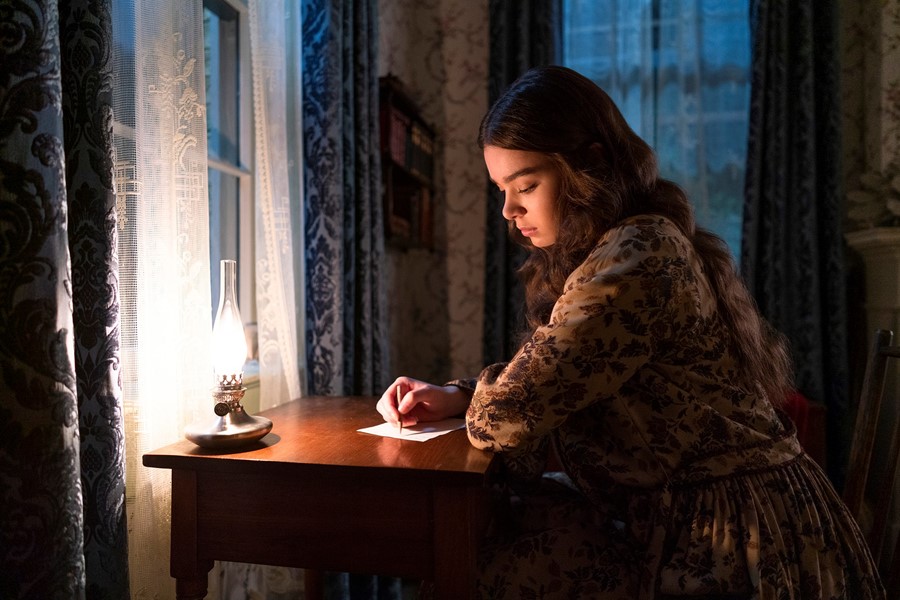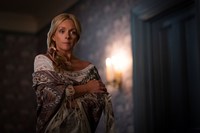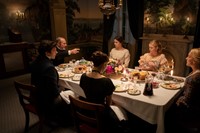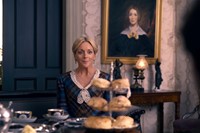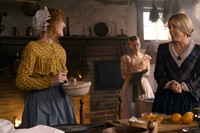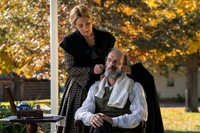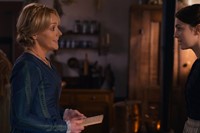Dickinson illustrates the life of maverick writer Emily Dickinson. Here, screenwriter Alena Smith describes how the series reinvents the period biopic
“Right after I graduated from college, I was working in a bookstore reading whatever I found on the shelves and I bought myself a copy of her biography,” says Alena Smith when I ask her what first piqued her interest in the American poet Emily Dickinson. “I was struck by the ironies of her life. Emily’s father, Edward, was so concerned with the Dickinson name, so worried about how his daughter’s writing might tarnish the family’s reputation, but in the end, she’s the only reason anyone remembers it.” The poet is the subject of Apple’s newest original TV series, Dickinson, a ten-episode comedy series which audaciously explores the constraints of society, gender and family from the perspective of the rebellious young writer. “It’s a coming-of-age story about a radical female artist who is ahead of her time. The show uses both the facts of Emily Dickinson’s early life, as well as the images, attitudes and spirit of her poems, to reinvent the biopic,” says Smith.
Psychedelic, sharp-witted and sumptuously detailed, Dickinson uses magical realist touches to stretch and reshape the conventions of a traditional period drama through Emily’s vivid imaginative reveries. The younger characters speak in today’s vernacular, and the series’ soundtrack features artists such as Noga Erez, Lizzo, Damien Rice, Carnage and Billie Eilish, among others. For Smith, “the show uses the 1850s as a funhouse mirror to reflect our culture and what it means to come of age in America today”.
Led by Hailee Steinfeld (True Grit), Jane Krakowski (30 Rock), Toby Huss (King Of The Hill) and Anna Baryshnikov (Manchester By The Sea), Dickinson challenges received wisdoms about Emily’s life as a recluse, trapped in her Amherst home by the confines of 19th-century womanhood. The show instead seeks to dramatise the poet’s imaginative universe. “Inside her life was as wild and crazy as you can imagine. It was dramatic and playful and comedic all at the same time,” says Smith. “Anytime I found a fact about Emily’s life that interested me or I thought was funny, I put it in. There’s a moment in the first episode where Emily’s father chastises her for setting the table with a chipped plate, and Emily throws the plate into the fire. That’s a true story. In her school ledger she’s simply listed as ‘helpless’ because she was the only student who refused to have a ‘born again’ conversion experience when a fanatical religious fervour swept through New England.”
Throughout, Dickinson aims to blend hyper-realistic detail with a refreshingly contemporary sensibility. Wallpaper for Emily’s Amherst home was imported from French artisans who have been working since the 17th century, hand-stitched costumes were modelled on mid-19th-century templates, and a significant chunk of filming took place at a living museum in Bethpage, Long Island. “On a typical day in Bethpage you’ll see people just walking around in period costume, even when nobody was visiting. It felt a little like I was in Westworld, I didn’t know if they were robots,” says Smith. It’s this kind of permeability, the past blending into the present, that Smith hopes Dickinson recreates for the viewer. “I like to blur the lines between fantasy and reality so you lose track of which is which. My goal is that you could watch ten episodes of Dickinson, look up, blink your eyes, and not quite know whether it’s still the 1850s or not.”
Despite Dickinson’s irreverent tone, death is a prevalent theme throughout Emily’s story, a fact perhaps less surprising given the focus of her poetry. “Her entire culture was fixated on death,” says Smith. “All the religion that surrounded her was trying to grapple with mortality. She was surrounded by death, she lost 35 friends in one year. Part of what we see throughout season one is Emily developing a more mature relationship to death when she loses someone important to her for the first time.” As with the score and dialogue, for Smith, the show uses a historic focus to explore a topic which has resonance to young people today. “I think in this younger generation, there’s a sense of heaviness and gloom, and I wanted to make a show about a young character that doesn’t trivialise hurt or her problems. We’ve made something where people deal with some really heavy shit, their lives are serious and difficult and profound. I think a lot of young people today have a lot on their plate and I think there’s a sense of foreboding to being young.”
Ultimately Smith hopes that the show, with its wry humour and charming central protagonist, will inspire audiences to rethink Dickinson as a modern-day feminist icon. “I think everyone feels a little bit trapped in their own time and maybe that’s something that the series can help us reflect on and find ways to push our time forward. Emily Dickinson is not a victim, she lived in these confined, depressed circumstances but she claimed all the agency she could within that space and that’s why she can be a hero to people today.”
All episodes of Dickinson will premiere on November 1, 2019 exclusively on Apple TV+.
